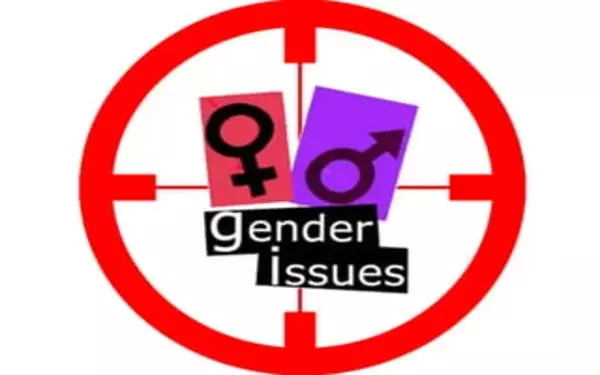Studies have shown that gender bias has persisted over centuries and continues to affect various aspects of society, including education, employment, and leadership positions. Despite progress made towards gender equality, there are still significant disparities between men and women in many areas.
Political scientists use archaeological findings and survey data on contemporary gender attitudes to discover that people who live in areas that historically favored men over women have more pro-male bias today than people who live in areas where gender relations were more egalitarian centuries ago. The findings highlight the importance of cultural transmission of gender norms.
According to new research from Washington University in St. Louis, modern gender norms and biases in Europe have deep historical roots dating back to the Middle Ages and beyond, implying that DNA is not the only thing we inherit from our forefathers.
The findings, which will be published in the Proceedings of the National Academy of Sciences (PNAS) on March 13, 2023, explain why gender norms have remained stubbornly persistent in many parts of the world despite significant strides made by the international women’s rights movement over the last 100-150 years.
Using dental records from 139 archaeological sites across Europe, researchers discovered that people who live in areas where gender relations were more egalitarian centuries ago have more pro-male bias today than those who live in areas where gender relations were more egalitarian centuries ago – evidence that gender attitudes are “transmitted,” or passed down from generation to generation.
These biases outlasted massive socioeconomic and political changes like industrialization and world wars. Researchers discovered one exception to the rule: transmission of these values was disrupted in regions that experienced abrupt, large-scale population replacement, such as a pandemic or natural disaster.
“The skeletons in this study have a median age of about 1,000 years, dating back to the medieval era. It is thus remarkable that the patterns of gender bias that existed at the time and before are still present in contemporary attitudes “said Dr. William Taussig Professor of Arts and Sciences at WashU, Margit Tavits.
Gender norms are widely assumed to be a byproduct of structural and institutional factors such as religion and agricultural practices. Our findings highlight how gender-equal norms passed down from generation to generation can persist even when institutions or structures incentivize inequality, and vice versa.
Dr. William Taussig
“Given Europe’s enormous social, economic, and political changes during this time period, our findings speak to the power of cultural transmission of gender norms.” The incredible stability of these norms over hundreds, if not thousands, of years explains why progress toward gender equality has been difficult in some regions.
“Gender norms are widely assumed to be a byproduct of structural and institutional factors such as religion and agricultural practices. Our findings highlight how gender-equal norms passed down from generation to generation can persist even when institutions or structures incentivize inequality, and vice versa “Tavits stated.
About the research
Previous archaeological research has examined prehistoric gender equality using linear enamel hypoplasias, which are permanent lesions on the teeth caused by trauma, malnutrition, or disease. Because the lesions form only in cases of prolonged bodily stress, their presence or absence can reveal a lot about the person’s health and living conditions. Furthermore, differences between male and female teeth in the same location indicate which sex received preferential treatment at the time in terms of health care and dietary resources.

Tavits believes that studying gender norms in Europe is advantageous due to the region’s relative similarity in various institutional and environmental conditions. This enabled researchers to account for factors such as religion and political institutions that may influence modern gender attitudes.
Because differences in gender attitudes across the continent are relatively small when compared to the rest of the world, this setting also raised the bar for detecting significant associations between historical and contemporary attitudes. Nonetheless, researchers discovered evidence of this link time and again. Individuals living in historically egalitarian areas, for example, were 20% more likely to have pro-female attitudes than those living in historically pro-male areas.
Additional tests showed that historical gender bias failed to predict modern gender attitudes for immigrant populations. Researchers also found no evidence of historical gender bias impacting contemporary attitudes in areas hardest hit by the bubonic plague of the 14th century. Finally, they looked to the United States, where the arrival of European settlers in the 16th century led to large-scale displacement of Native Americans. Once again, they found no association between historical and current gender norms.
“Together, these findings provide further support for the idea that historical biases persist because they are passed down from one generation to the next and occur only when the transmission across generations is not interrupted. We were surprised that such a clear relationship emerged,” Tavits said.
A tale of two cities
In the paper, Tavits, Damann and Siow highlight two archaeological sites to illustrate how the contrasting historical treatment of women relative to men is reflected in current gender attitudes.
At the first site in Istria, a small urban Greek settlement on the Black Sea in the modern Dobruja region of Romania, researchers found evidence of a pro-male bias in historical dental records dating back to around 550 A.D. Out of the 49 skeletons for whom sex and dental information could be extracted, 58% of females show signs of malnutrition and trauma in their teeth, while only 25% of males do.
According to the authors, the status of men and women in society today remains relatively unequal in Romania’s southeastern region, based on modern indicators of gender equality. For example, only 52.5% of women work, compared to 78% of men, and only 18% of modern municipal council representatives are women.
They write that the population’s beliefs about gender norms are similarly unequal. More than half of residents believe that men have a greater right to work than women, and there is nearly unanimous agreement (89%) that a woman must have children in order to be fulfilled.
Compare this to Plinkaigalis, a rural community in modern-day western Lithuania populated by Balts. Unlike Istria, Plinkaigalis was concerned about women’s health. Of the 157 skeletons discovered at this site, which dates back to 550 A.D., 56% of males exhibit dental signs of trauma and malnutrition, while only 46% of females do. Separate studies have found evidence that gender norms in this country are favorable to women.
This location, now known as Ke?dainiai, is still relatively gender equal in the modern era. Western Lithuanian employment levels do not differ significantly by gender: 76% men vs. 72.7% women. Women are also nearly proportionally represented in local government (48%). Similarly, less than a quarter of modern-day residents believe men have a greater right to work than women, and 56% believe women need children to be fulfilled.













